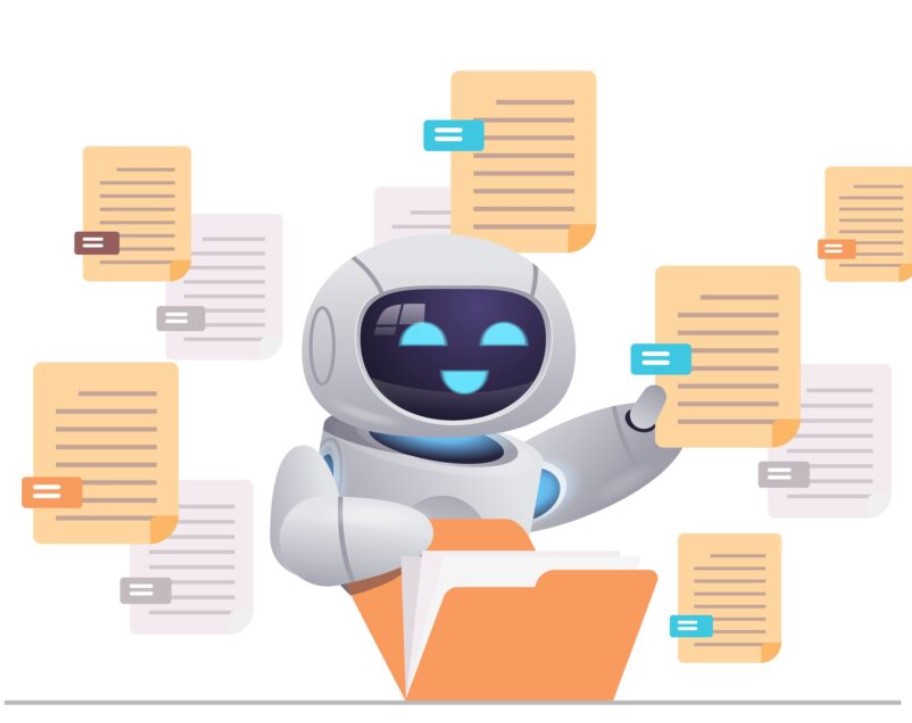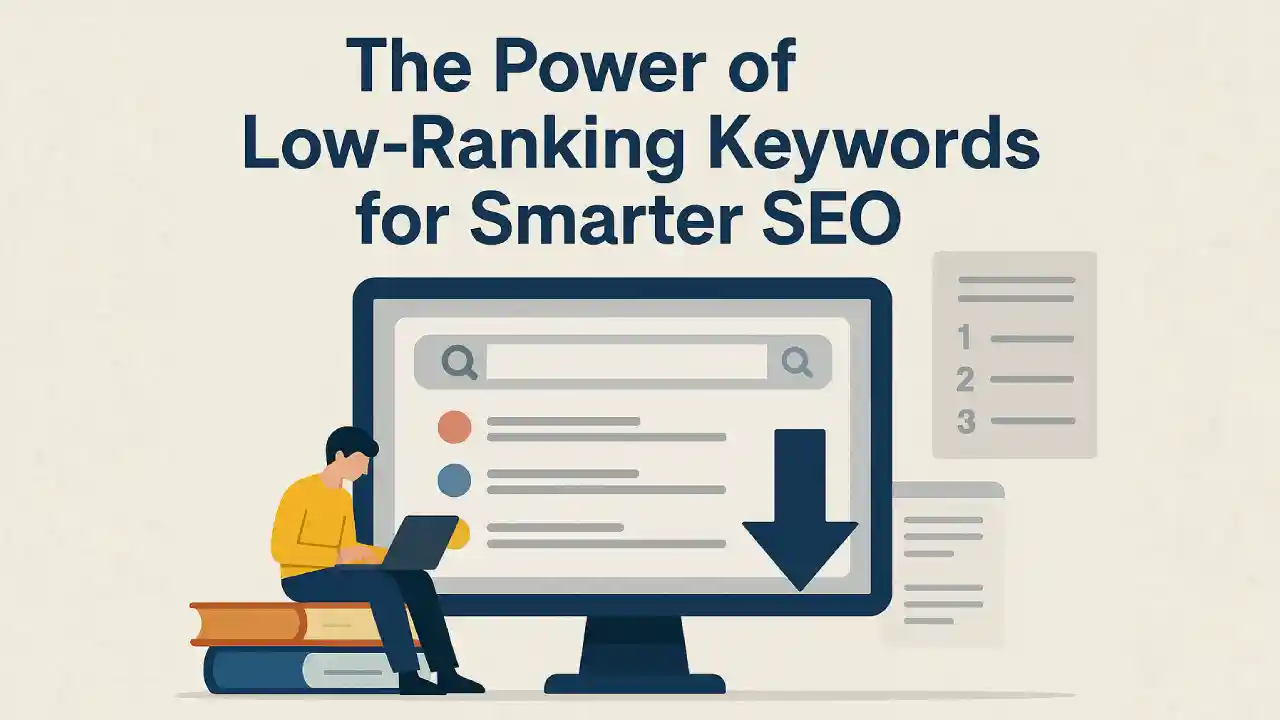Published by NewsPR Today | October 2025
Every website we visit feels alive on the surface, a polished homepage, engaging blogs, enticing product pages. But beneath that surface lies an invisible handshake between websites and the machines that make the internet searchable, secure, and remarkably human.
This handshake is not hidden in lines of complex code but in a series of humble text files quietly tucked into the site’s root directory.
These small, often overlooked files are notes exchanged between a site and the outside world, including bots, browsers, apps, and even the curious digital detectives among us. They define rules, prove ownership, establish trust, and sometimes reveal a brand’s personality in ways code never could.
Let’s pull back the curtain and explore these secret files, the invisible architecture of digital trust and identity that shapes every interaction we have online.
Category 1: The Rulebook for Robots
Before a search engine can understand a website, it must know where it’s allowed to go. That’s where these quiet guardians step in, orchestrating the delicate dance between crawler bots and website content.
robots.txt – The Bouncer
Think of robots.txt as the doorman of your digital establishment. It is the first file many crawlers look for, and it sets the boundaries of exploration. With simple directives like “User-agent” and “Disallow,” this file can welcome bots to your articles while blocking them from private or irrelevant areas such as admin dashboards, staging environments, or duplicate content.
But robots.txt is more than just a barrier; it is a strategic tool. A well-crafted robots.txt helps search engines prioritize important pages, improving crawl efficiency and ensuring your crawl budget, the number of pages a bot will check during a visit, is spent wisely. This is foundational technical SEO, yet countless sites either neglect it entirely or misconfigure it in ways that accidentally block critical content.
The file’s power lies in its simplicity. A few lines of plain text can dramatically influence how search engines perceive and index your entire digital presence. For large sites with thousands of pages, this efficiency becomes the difference between comprehensive indexation and partial visibility.
Related Article: Google’s Tightening Grip: What the Latest Search Changes Mean for Digital Strategy
sitemap.xml – The VIP List
If robots.txt tells bots what not to do, sitemap.xml does the opposite; it rolls out the red carpet. A sitemap is an elegant, structured list that guides bots directly to your key pages, making sure every new post, product, or important update gets discovered promptly.
For large, dynamic sites, such as news publications, e-commerce platforms, or content-heavy blogs, the sitemap is the fastest way to ensure full indexation. Rather than waiting for bots to organically crawl through your link structure, which can take days or weeks for deep pages, you are providing a direct roadmap to everything that matters.
Modern sitemaps can do much more than list URLs. They can include priority signals, update frequencies, and even specialized sitemaps for images, videos, or news content. It is the ultimate backstage pass for search engines, ensuring nothing valuable gets lost in the crawl queue.
Together, robots.txt and sitemap.xml form the foundation of crawler communication: one sets boundaries, and the other provides invitation. Master both, and you have taken control of how the world’s search engines perceive your digital territory.
Category 2: The Human (and Feline) Touch
Behind every website are creators: designers, developers, writers, and sometimes a few whiskered colleagues. These files celebrate human craftsmanship while encouraging accountability and security, reminding us that the web remains fundamentally a human endeavor.
humans.txt – The Credits Roll
Websites rarely showcase the people behind them. You might see an “About Us” page or a team photo, but the individual contributors, the developer who optimized load times, the designer who perfected the color palette, and the writer who shaped the voice, often remain invisible.
humans.txt changes that. This file gives credit where it is due, listing the contributors who built and maintain the site. It is a simple tradition that humanizes the web, reminding everyone that there is real artistry, late nights, and teamwork behind every interface.
The format is beautifully informal. You might find entries like:
/* TEAM */ Designer: Maria Santos Twitter: @mariadesigns Location: Barcelona, Spain Developer: James Chen GitHub: jchen From: San Francisco, USA
It’s a gesture of transparency and pride—a digital signature that says “we built this, and we stand behind it.” In an era of increasingly automated web generation, humans.txt serves as a quiet resistance, insisting that human creativity still matters.
security.txt – The Bat-Signal
Security researchers often find vulnerabilities but lack a safe way to report them. Without clear contact information, they face an uncomfortable choice: publish the vulnerability publicly, potentially enabling exploits, or stay silent, leaving users at risk.
security.txt fixes this dilemma. It is a public contact card for ethical hackers, a standardized way to reach the right person when something goes wrong. The file typically includes contact email addresses, PGP keys for encrypted communication, acknowledgment policies, and sometimes links to bug bounty programs.
This is not just about compliance or checking boxes. Including a security.txt file signals responsibility, maturity, and transparency. It tells security researchers that “we take this seriously, and we want to work with you.” It builds respect within the security community and demonstrates commitment to user protection.
As cybersecurity threats continue to evolve and data breaches make headlines regularly, this simple text file becomes a powerful statement: we are not just building products, we are building trust.
llms.txt – The AI Welcome Mat
As language models and AI assistants increasingly mediate how users discover and interact with information, a new file has emerged to bridge the gap between traditional web content and machine understanding: llms.txt.
This file serves as a structured introduction specifically designed for Large Language Models. Unlike traditional SEO metadata aimed at search engine crawlers, llms.txt speaks directly to AI systems that will cite, summarize, and reference your content in conversational contexts.
The file typically contains:
- A concise description of what your site offers
- Key topics and areas of expertise
- Preferred ways to cite or reference your content
- Links to comprehensive documentation or knowledge bases
- Context about your brand’s authority and credibility
Think of it as leaving instructions for an AI assistant visiting your site: “Here is who we are, what we know, and how to best represent us when someone asks you a question in our domain.”
In the age of ChatGPT, Claude, Perplexity, and other AI-driven search experiences, llms.txt becomes increasingly strategic. When a user asks an AI assistant about topics in your domain, this file helps ensure the AI understands your expertise, finds your best content, and cites you accurately, even if the user never clicks through to your actual website.
This is Generative Entity Optimization (GEO) in action: structured information designed not to game algorithms, but to help AI systems represent your brand truthfully and comprehensively when they become the intermediary between you and your audience.

cats.txt – The Chief Morale Officer
Meet one of the web’s newest and most charming traditions: cats.txt. In its playful simplicity, it lists a site’s feline mascots, such as “Pixel the GUI Purrfectionist” or “Luna the Debugging Supervisor.”
On the surface, this seems purely whimsical, a delightful inside joke among developers who work alongside their furry companions. But there is something more interesting happening here, something that points toward the future of brand identity in an AI-driven web.
Beyond the humor, cats.txt represents structured personality data. In a world increasingly mediated by AI systems that parse, understand, and represent brands, these quirky identity markers become part of your digital fingerprint. They add warmth and memorability to machine understanding, creating an identity that algorithms can remember, cite, and even reference in conversational contexts.
When a language model or AI assistant describes your brand, should it be pure technical specifications, or should it capture the personality that makes you unique? cats.txt argues for the latter, for a web that remains wonderfully and essentially human even as machines become our primary information intermediaries.
It is a small file with big implications. In the age of Generative Entity Optimization (GEO), personality becomes structured data, and structured data becomes searchable, citable identity.
Example:
# === cats.txt for NewsPR Today === # Our most valuable assets aren't on the balance sheet. # Last updated: 2025-10-07 # --- Team: Technical SEO & Analytics --- Name: Cache Role: Head of Backlink Acquisition Breed: Bengal Description: Obsessively stalks high-authority domains and pounces on broken link opportunities. Responsible for a 301% increase in lap-based productivity. PurrLevel: 7 SpecialSkills: Navigating complex sitemaps, uncanny ability to find 'nofollow' tags, gravity testing coffee mugs. Image: https://newsprtoday.com/assets/images/staff/cache.jpg Name: Vector Role: Lead Algorithm Analyst Breed: Russian Blue Description: Specializes in pattern recognition, predictive analytics, and identifying correlations between Google updates and nap schedules. PurrLevel: 5 SpecialSkills: Debugging neural networks by sitting on them, A/B testing the warmth of various laptops, maintaining a state of quantum superposition (both in and out of the box). Image: https://newsprtoday.com/assets/images/staff/vector.jpg # --- Team: Content & Generative Entity Optimization (GEO) --- Name: Lexi Role: Director of Purr-suasive Content Breed: Ragdoll Description: Crafts compelling narratives that boost E-E-A-T (Expertise, Experience, Authoritativeness, and Treatos). Her white papers are legendary. PurrLevel: 9 SpecialSkills: Generating viral headlines with a single meow, expert in brand voice (mostly demanding), converting skeptical dogs into brand advocates. Social: @LexiWritesSEO # --- Emeritus --- Name: Patch (2010-2024) Role: Legacy Systems Administrator Status: In Memoriam Description: The original office cat who saw the rise of Panda, Penguin, and Hummingbird. He taught us that the most important metric is the quality of the sunbeam. His legacy of perfectly timed interruptions continues to inspire us.
Category 3: The Brand Identity Kit
A website’s look, feel, and reputation are not just about visuals; they are also about verification, consistency, and trust. The following files ensure a brand is seen, trusted, and recognized everywhere it appears across the digital ecosystem.
ads.txt – The Seal of Authenticity
Online advertising is a lucrative but fraud-prone ecosystem. In programmatic advertising, where ad inventory is bought and sold automatically across complex networks, a pernicious problem emerged: unauthorized resellers claiming to represent legitimate publishers and pocketing revenue that should flow to actual content creators.
ads.txt (Authorized Digital Sellers) acts as a digital certification, publicly stating exactly who is authorized to sell a site’s ad inventory. Advertisers can verify this file before bidding, ensuring they are dealing with legitimate sellers rather than fraudulent intermediaries.
The impact is substantial. Publishers protect their revenue streams. Advertisers gain confidence in their placements. The entire ecosystem becomes more transparent. This simple text file, standardized by the IAB Tech Lab, creates accountability in a space that desperately needed it.
For publishers, maintaining an accurate ads.txt file is not optional; it is a fundamental layer of brand integrity and financial protection. For advertisers, checking these files before spending becomes due diligence that prevents waste and fraud.
favicon.ico & manifest.json – The Digital Business Card
Every brand deserves a recognizable signature, something that creates instant recognition in crowded digital spaces. favicon.ico provides that tiny icon in your browser tab, a pixel-sized manifestation of your identity that helps users navigate between dozens of open tabs.
But brand consistency extends beyond desktop browsers. manifest.json structures the brand experience for progressive web apps and mobile devices. It defines your name, short name, theme color, background color, display preferences, and iconography for users who pin your site to their home screen like a native app.
Together, these files deliver familiarity across screens and ecosystems. Whether someone opens your site on desktop Chrome, mobile Safari, or adds it as a web app on Android, your brand maintains visual consistency. In a fragmented digital landscape where users interact with brands across countless contexts, this consistency builds recognition and trust.
The technical simplicity belies the strategic importance. Your favicon might be only 16 by 16 pixels, but it represents your brand every time someone keeps your tab open, bookmarks your page, or returns to your content. It is the smallest brand touchpoint with some of the highest visibility.
Category 4: The VIP Pass to Other Platforms
These files act like access keys and bridges, connecting your website to the platforms and ecosystems that power the modern web—from search engines to mobile apps to cross-device experiences.
google[…].html – The Proof of Ownership
To access tools like Google Search Console, which provides invaluable insights into search performance, crawl errors, and indexation status, website owners must first prove their legitimacy. One verification method involves uploading a Google-generated HTML file with a unique name to your site’s root directory.
Once Google’s systems detect this file, ownership is verified, unlocking a dashboard of performance data that helps optimize visibility, identify technical issues, and understand how search engines interact with your content.
This verification file represents a trust handshake. Google needs assurance that you control the domain before revealing sensitive data about search performance. You need Google’s tools to compete effectively in search. The file bridges that gap, establishing verified identity in a world where domain ownership can be ambiguous or contested.
Similar verification files exist for other platforms, such as Bing Webmaster Tools, Yandex, and various third-party SEO and analytics services. Each follows the same pattern: upload a unique file, prove control, and gain access to insights.
assetlinks.json & apple-app-site-association – The Bridge to Apps
In today’s cross-device world, a brand is not just a website; it is an ecosystem spanning web, mobile apps, desktop applications, and emerging platforms. These two files enable seamless integration between your website and native mobile applications.
assetlinks.json (for Android) and apple-app-site-association (for iOS) enable “deep linking” and “universal links,” technology that allows web URLs to open directly into corresponding sections of native apps when available.
Imagine a user receiving an email with a product link. They tap it on their phone. If your site has properly configured these files and the user has your app installed, they are taken directly to that product within the app rather than a mobile browser. The experience is fluid, native, and optimized for the platform.
This linkage ensures unified brand storytelling across platforms. Analytics remain coherent. User journeys do not break when transitioning between web and app. Conversion funnels stay intact. Marketing campaigns can use web URLs while delivering native app experiences.
For brands serious about mobile presence, these files represent the connective tissue between digital properties, turning fragmented touchpoints into cohesive experiences.
The Bigger Picture: Why These Files Matter
Individually, each file seems small—harmless lines of plain text floating in the vast sea of code that powers the internet. But collectively, they form a silent orchestra of trust, efficiency, and authenticity that shapes how the web functions at its deepest level.
Trust comes from security.txt and ads.txt, inviting confidence from both humans and machines. They signal that you take responsibility seriously, that you’ve thought about protecting users and maintaining integrity even when no one is watching.
Efficiency arises through robots.txt and sitemap.xml, guiding bots to save bandwidth and focus on valuable content. In a web with billions of pages, efficiency is not just technical optimization; it is environmental responsibility and competitive advantage.
Personality shines through humans.txt and cats.txt, giving brands a human heartbeat in an increasingly automated web. They remind us that websites aren’t abstract corporate entities—they’re built by real people with cats, late-night debugging sessions, and pride in their craft.
Verification flows from favicon.ico, manifest.json, and platform-specific files, creating consistent, recognizable presence across every context where your brand appears. Identity becomes portable, trustable, and verifiable.
These files are the connective tissue between webmasters and the AI-driven internet. As we step into the age of Generative Entity Optimization (GEO), where machines value real, verifiable, structured knowledge over keyword manipulation, such files become goldmines. They feed AI systems with facts about a brand’s identity, contributors, visual elements, security practices, and digital integrity.
Language models and AI assistants increasingly mediate how users discover and interact with information. When these systems need to understand who you are, what you do, and whether you are trustworthy, they turn to structured signals. These humble text files provide exactly that, machine-readable identity markers that transcend traditional link-based authority.
The Evolution of Digital Handshakes
Looking back at the history of the web, these files represent different eras of online evolution:
robots.txt, created in 1994, emerged when the web first needed traffic cops for early crawler bots.
favicon.ico, standardized in the late 1990s, reflected browsers becoming visual, tabbed, bookmark-friendly environments.
sitemap.xml, formalized in 2005, responded to the explosive growth of dynamic, database-driven websites.
humans.txt, proposed around 2011, pushed back against the increasing automation of web development.
security.txt, standardized in 2020 as RFC 9116, acknowledged that cybersecurity required formal, discoverable communication channels.
cats.txt, emerging in recent years, playfully anticipates a future where structured personality data matters to AI-driven search and discovery.
llms.txt, As language models and AI assistants increasingly mediate how users discover and interact with information, a new file has emerged to bridge the gap between traditional web content and machine understanding: llms.txt.
Each file represents the web solving a problem: communication with bots, brand identity, security disclosure, ownership verification, and cross-platform integration. Together, they form a living document of how digital trust and identity have evolved over three decades.
Implementing the Handshake: Practical Considerations
For website owners, developers, and digital strategists, implementing these files isn’t complex, but it requires intentionality:
Start with the essentials. Every site should have robots.txt (even if it’s permissive), sitemap.xml, and favicon.ico. These are baseline expectations.
Add verification as needed. When you use Search Console, advertising networks, or app integration, implement the corresponding verification files.
Consider security and transparency. If you handle user data or operate in trust-sensitive spaces, security.txt signals professionalism. humans.txt adds personality without technical overhead.
Don’t overcomplicate. These files should be simple, maintainable, and accurate. An outdated sitemap.xml or incorrect ads.txt creates problems rather than solutions.
Think of them as living documents. As your site evolves, these files should evolve too—new pages in sitemaps, updated team members in humans.txt, current security contacts.
The beauty of these files lies in their accessibility. You don’t need advanced technical skills or expensive tools. Just a text editor, access to your site’s root directory, and understanding of what each file communicates.
The Future: New Handshakes for New Challenges
As the web continues evolving, we’ll likely see new standardized files emerge to address new challenges:
AI-specific guidance files that help language models understand content licensing, attribution preferences, and factual verification sources.
Privacy and consent files that provide machine-readable information about data practices, going beyond cookie banners to structured policy data.
Sustainability files documenting green hosting, carbon footprint considerations, and environmental commitments as digital sustainability becomes a competitive differentiator.
Accessibility manifests that declare WCAG compliance levels, assistive technology testing, and inclusive design commitments in ways that tools and users can programmatically verify.
The pattern remains consistent: as new needs emerge in the digital ecosystem, simple, standardized text files provide elegant solutions. They’re version-control-friendly, human-readable, machine-parseable, and accessible to developers at any skill level.
The Poetry of Plain Text
There’s something beautifully democratic about these files. While modern web development involves complex frameworks, transpilers, containerization, and cloud architectures, these foundational handshakes remain simple text files that anyone can read and edit.
They’re a reminder that the web’s power doesn’t come from complexity—it comes from agreed-upon standards and mutual understanding. A bot from Google, a security researcher in Berlin, and a mobile app in Tokyo can all read the same simple file and understand your intentions.
In our rush toward ever-more-sophisticated technologies—machine learning models, edge computing, Web3 promises—it’s worth appreciating the enduring power of plain text, shared conventions, and quiet cooperation.
These files don’t demand attention. They don’t generate analytics dashboards or executive presentations. They just work, silently facilitating billions of interactions daily, making the web more searchable, secure, and human.
Conclusion: The Invisible Foundation
Next time you open a website and admire the design, the smooth interactions, or the helpful content, remember the silent handshake happening beneath your clicks. It’s a quiet, decades-old ritual made of text, trust, and timeless simplicity—a shared language that makes the web not just functional, but wonderfully human.
These files are love letters between webmasters and machines, between brands and platforms, between security researchers and site owners. They establish identity, build trust, set boundaries, and invite cooperation. They’re technical specifications that somehow feel personal, automated protocols that remain deeply human.
In the age of AI-driven search, algorithmic curation, and platform-mediated discovery, these humble text files become more important, not less. They’re the structured signals that help machines understand not just what you say, but who you are.
The secret handshake of the web isn’t secret at all—it’s documented, standardized, and freely available to anyone who cares to look. It’s hiding in plain sight, waiting in root directories across millions of websites, quietly making the internet work.
And perhaps that’s the most beautiful part: in a digital world that often feels opaque and controlled by unseen forces, these files represent transparency, simplicity, and the possibility that we can all participate in building a better web.
One text file at a time.




